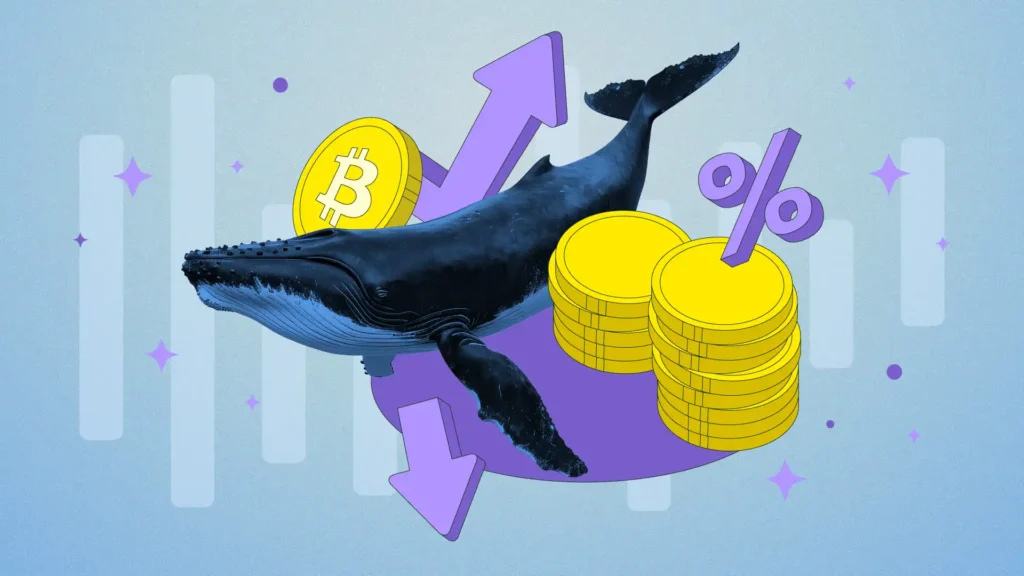In the unpredictable world of cryptocurrency, retail investors often face challenges that large market players—commonly referred to as “whales”—are well-equipped to exploit. These whales, due to their vast resources and large holdings, can manipulate market movements to their advantage, setting traps that unsuspecting traders fall into. One of the most common and deceptive tactics they use is known as the “whale trap.”
Understanding how these traps work and the common patterns that accompany them can help retail investors avoid costly mistakes. In this post, we’ll explore the mechanics of whale traps and offer insight into how traders can protect themselves from falling into these manipulative scenarios.
What Is a Whale Trap?

A whale trap occurs when large investors create false signals in the market to mislead retail traders into making decisions that lead to losses. Essentially, it’s a market manipulation tactic designed to take advantage of smaller players. There are two primary types of whale traps:
- Bull Traps: In a bull trap, whales artificially inflate the price of a cryptocurrency to create the illusion of a breakout. Retail investors, seeing the price surge, rush to buy in, believing that the upward momentum will continue. However, once the whales have lured in enough buyers, they sell off their holdings, causing the price to drop rapidly and trapping those who entered at the top.
- Bear Traps: A bear trap is the opposite. Here, whales intentionally drive the price down, making it appear as though the market is crashing. Retail traders, fearing further losses, sell off their positions in a panic. Once the price stabilizes, whales swoop in to buy the assets at a lower price, leaving the retail traders who sold behind at a loss.
These traps are set up to exploit the emotions of retail traders—fear and greed—and often lead to significant losses for those who aren’t aware of the patterns behind the market movements.
Common Patterns of Whale Traps

To avoid falling into a whale trap, it’s essential to recognize the common patterns that typically accompany these market manipulations. Here are a few key signs to watch out for:
- Sudden, Unexplained Price Movements: One of the most common signs of a potential whale trap is a sudden spike or drop in price without any accompanying news or fundamental reason. These sharp moves often signal that whales are attempting to manipulate the market, setting the stage for a reversal and trapping traders who act impulsively.
- High Trading Volume with No News: When a cryptocurrency experiences a surge in trading volume but there’s no significant news or event to justify it, it could be a sign of market manipulation. Retail traders may interpret this as a signal that the asset is gaining momentum, leading them to jump in, only for the whales to sell off at the top, causing the price to drop.
- Fake Buy/Sell Walls: Whales sometimes place large buy or sell orders at specific price levels to create the illusion of support or resistance. These orders are typically not meant to be executed and are canceled shortly after. The goal is to deceive retail traders into thinking that the price will either rise or fall significantly at those levels, influencing their buying or selling decisions.
- Wash Trading: This technique involves buying and selling the same asset simultaneously to artificially create the illusion of increased market activity. The goal is to attract retail investors into believing there is real momentum behind the asset, when in fact, the activity is fake. Once retail traders buy in, the whales can sell off their holdings, causing the price to drop.
- Stop-Loss Hunting: Whales are often able to identify where retail traders have placed their stop-loss orders—levels at which traders set automatic sell orders to limit losses. By pushing the price to those levels, whales can trigger a cascade of sell orders, further driving down the price. This tactic allows them to buy up more of the asset at a lower price while retail traders are left with losses.
How to Protect Yourself from Whale Traps

Although it’s impossible to completely avoid all market manipulation, there are several strategies that retail investors can employ to minimize the risk of falling into whale traps:
- Wait for Confirmation: Before acting on a price movement, always look for confirmation through solid news or fundamental analysis. Never rush to buy or sell based on sudden price spikes without understanding what’s driving the move. Taking the time to verify the reason behind a price movement can help prevent knee-jerk reactions.
- Use Limit Orders: Instead of placing market orders, use limit orders to control the price at which you buy or sell. This strategy ensures you aren’t caught off guard by sudden market fluctuations and can help you avoid getting in at an unfavorable price when a whale trap is in play.
- Monitor Trading Volume: Be cautious when you notice unusual trading volume without any corresponding news. While higher volume is often seen as a sign of market interest, when it’s unaccompanied by any meaningful updates, it may be a sign of market manipulation. Use this as a red flag and do further research before making any trades.
- Avoid Over-Leveraging: Using leverage can amplify both gains and losses. In highly volatile markets, over-leveraging exposes you to greater risks, especially when manipulated price movements are common. Always trade with caution and ensure you have enough margin to weather unexpected swings in the market.
- Diversify Your Portfolio: One of the best ways to mitigate the risk of market manipulation is by diversifying your investments. By spreading your assets across different cryptocurrencies or even different asset classes, you reduce the potential impact of any single whale-driven market movement.
Conclusion
The whale trap is a manipulation tactic designed to exploit retail investors, but with the right knowledge and strategies, you can protect yourself from falling into it. By understanding the common patterns that precede whale traps, such as sudden price movements, high trading volumes, and fake buy/sell walls, you can make more informed decisions and avoid getting caught in these market pitfalls.
Remember, the cryptocurrency market is inherently volatile, and whales have the power to influence price movements. However, by staying patient, doing your research, and using prudent risk management strategies, you can minimize the impact of these traps and better navigate the complexities of the crypto world.




Comments are closed